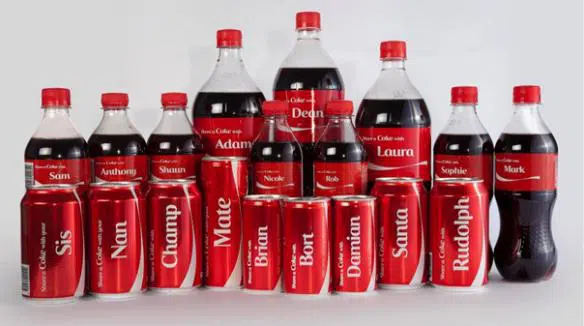Imagine a world without Coca-Cola. That refreshing taste, the iconic bottle, and the sense of joy it brings – it’s hard to imagine a world without it. But what makes Coca-Cola so special? How has it managed to become one of the most beloved brands in the world? The answer lies in emotional branding. Coca-Cola has been using emotional branding for decades to create a brand personality that evokes joy, happiness, and optimism. In this article, we’ll explore the magic of emotional branding and how Coca-Cola’s strategy has made it a global phenomenon.
Emotions are a fundamental part of human behavior, and they play a crucial role in our decision-making process. Emotional branding leverages this by creating a brand personality that resonates with its customers’ emotions. By tapping into customers’ emotions, brands can create a lasting impression and build a deep connection with their customers.
Coca-Cola and Emotional Branding
Coca-Cola is a brand that has been using emotional branding for decades. Since its inception in 1886, Coca-Cola has evolved into one of the most recognized and beloved brands in the world. Coca-Cola has successfully used emotional branding to create a brand personality that is fun, joyful, and optimistic.
Coca-Cola has used several emotional branding strategies over the years, including storytelling, nostalgia, and social responsibility. Coca-Cola’s iconic “Hilltop” ad campaign, which featured people from different cultures singing “I’d Like to Teach the World to Sing,” is an example of the brand’s storytelling approach. The campaign was successful because it evoked positive emotions and created a sense of unity and harmony.
Another emotional branding strategy used by Coca-Cola is nostalgia. Coca-Cola’s “Classic” brand is an example of how the brand leverages nostalgia to create an emotional connection with its customers. By bringing back the classic formula, Coca-Cola tapped into customers’ nostalgia for the original taste of the brand.
Finally, Coca-Cola has also used social responsibility as a way to create an emotional connection with its customers. For example, the brand’s “World Without Waste” campaign aims to create a sustainable future by reducing waste and promoting recycling. This campaign not only aligns with customers’ values but also creates a positive emotional association with the brand.

Case Study: Coca-Cola’s “Share a Coke” Campaign
One of Coca-Cola’s most successful emotional branding campaigns was the “Share a Coke” campaign. The campaign involved replacing the Coca-Cola logo on its cans and bottles with the 150 most popular first names in each country where the campaign was launched. The campaign aimed to create a personalized experience for customers and encourage them to share a Coke with someone they care about.
The emotional appeal of the “Share a Coke” campaign was its ability to create a sense of belonging and connection. The campaign generated a lot of social media buzz, with customers sharing pictures of their personalized Coca-Cola bottles and cans. The campaign was a huge success, with Coca-Cola reporting a 2% increase in sales in the US and a 7% increase in Australia.
The benefits of emotional branding are numerous, including increased customer loyalty, improved brand perception, and higher revenue and profitability. Emotional branding can also help brands to stand out in a crowded market and differentiate themselves from their competitors.
Navigating the emotional landscape of branding can be a tricky business. Emotions are complex, and trying to balance them with the practical features of a product can be a delicate dance. Brands that use emotional branding face challenges such as maintaining consistency in messaging, striking the right balance between emotions and product features, and dealing with negative emotions. In this section, we’ll take a closer look at these challenges and explore how brands can overcome them to create a powerful emotional connection with their customers.
Maintaining Consistency in Messaging
One of the biggest challenges that brands face when using emotional branding is maintaining consistency in messaging. Emotional branding requires brands to have a clear understanding of their values, personality, and emotions that they want to evoke in their customers. Inconsistency in messaging can confuse customers and weaken the emotional connection with the brand. To overcome this challenge, brands must ensure that their messaging is consistent across all platforms and channels. From social media to advertising, every touchpoint should communicate a consistent message that resonates with the brand’s emotional values.
Balancing Emotion and Product Features
Another challenge that brands face in emotional branding is balancing emotion and product features. Emotional branding requires brands to tap into customers’ emotions, but at the same time, customers need to know the functional benefits of the product. Striking the right balance between emotions and product features can be a challenge, but it is crucial to creating a strong emotional connection with customers. Brands need to find a way to communicate the functional benefits of their product while also evoking positive emotions.
Managing Negative Emotions
Emotions are not always positive, and brands that use emotional branding need to be prepared to handle negative emotions. Negative emotions such as anger, disappointment, or frustration can arise when customers have a bad experience with a product or service. Brands need to be transparent and honest in their communication to address negative emotions and rebuild trust with customers. It’s important to acknowledge negative emotions and provide a solution that will satisfy the customer and restore their emotional connection with the brand.
In conclusion, emotional branding is a powerful tool that can help brands create a deep emotional connection with their customers. However, it also comes with its challenges, such as maintaining consistency in messaging, balancing emotion and product features, and managing negative emotions. Brands that overcome these challenges will reap the benefits of emotional branding, including increased customer loyalty, improved brand perception, and higher revenue and profitability. By understanding these challenges and implementing strategies to overcome them, brands can use emotional branding to create a lasting impression and build a strong emotional connection with their customers.

Hi there! As a brand developer, I specialize in helping early-stage startups create impactful and memorable brands. With a focus on simplifying the branding process, I bring creativity and strategy to every project. Learn more about how I can help with your branding needs. Let’s Talk.
